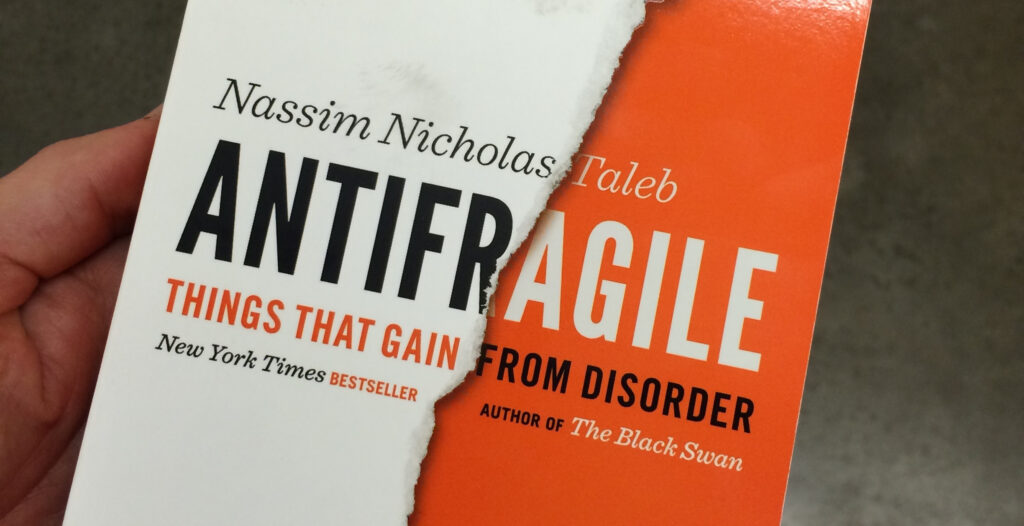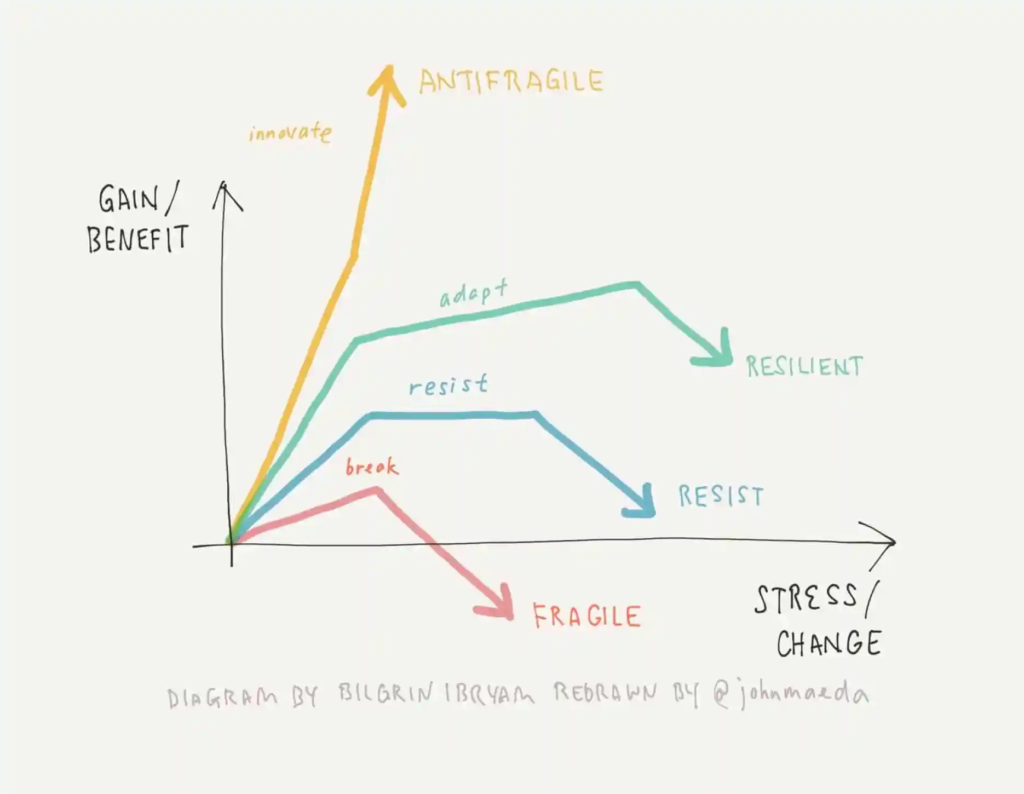We humans are hard-wired to dislike uncertainty – to the point where it’s more stressful for us to be in an uncertain situation vs. a situation where we know the outcome is bad. A challenge for businesses and governments alike is to remain competitive and resilient, the elusive pursuit of being “future-ready”.
A handy tool to achieve this state of readiness is developing resilient behaviour. But there is a step further to resilience that can shift the narrative altogether: anti-fragility.
Anti-fragile

Anti-fragility is a state where you can withstand external shocks and come out having improved from the whole ordeal.
Explored in Nassim Nicholas Taleb’s book ‘Antifragile: Things That Gain from Disorder’, anti-fragility is a notion that should be embraced by those that are looking to become truly limitless. Those that are anti-fragile, actually want randomness and instability.
Imbibing an Anti-Fragile Culture
Randomness and instability may sound counterintuitive as a measure for success and dependability.
But in an uncertain environment, orgnaisations need to remain tuned to respond to randomness. Develop a team that can perform multiple tasks, are not key man dependent, and develop organisational muscle to deal with chaos. If an external shock does come in, having prior exposure to such triggers can be the difference between struggling and thriving.
There are three steps you can take to put your team on the path to building an anti-fragile culture:
1. Embrace holistic transformation
At X-Leap we had a client looking to teach more data analytics and tools to the company. A reasonable step to building resilience, being future ready.
However, with our culture of digging deeper into how our solutions manage sustainable change, we found that the company’s needs lay elsewhere. The firm’s managers in reality needed to develop more confidence when it came to decision making and data. Tools were secondary. Instead of a primer on Excel and pivot tables, a whole new learning journey was established that would instill problem solving skills using the data at hand.
While the previous model was a safer means of teaching a few tools, the new curriculum gave more agency to managers to take informed decisions. And in turn the senior leadership more trust and confidence to deal with disruptions. To their credit they embraced the idea of people transformation over digital transformation wholeheartedly.
2. Leverage people
Something that may seem obvious in the long run, but one which even large companies sometimes fail to consider. For example, Uber’s been in the spotlight for its ruthless business practices and predatory antics. Based on this, some think that the reason Uber has failed is because of its treatment of its biggest asset: its people.
When we say people, this is not just limited to the notion of hiring. Rather, it’s putting people at the core of your strategy, i.e. Human Centered Design. Whether it’s figuring out a new product, or testing out a new framework, HCD benefits from the same tenets of anti-fragility. The constant need to test, improve and test again truly push an organization’s problem-solving capacities.
3. Accept non-linearity/chaos

This revisits a core belief of anti-fragility. In our bid to constantly build resilience, we like to sort out problems in a systematic way. We like recognizing patterns and repeated processes. However, disruptions are never linear. With the COVID pandemic in place, additional impacts like heat waves and floods also continued to affect us.
A non-linear setup breeds doubt, but it also forces us to step outside of our comfort zones and continuously recalibrate. A great example of this is Netflix’s Chaos Monkey. The tool is purposely built to introduce bugs and outages into Netflix’s backend platform. This puts the Netflix team in an interesting spot where it must continue its seamless streaming service while building better structures in its engineering infrastructure.
You can never have a true state of being anti-fragile. There are also great companies that go under, and there are so-so companies that continue to exist somehow, and the anti-fragility model in itself isn’t foolproof.
However, embracing a few of these principles into your daily business could start you down a road of introspection and embracing some great competitive tactics and improve your odds at remaining relevant in a fast-changing world.



